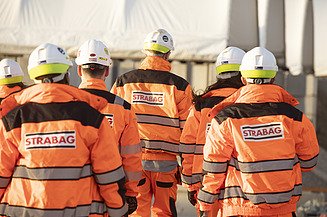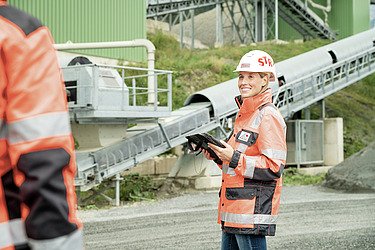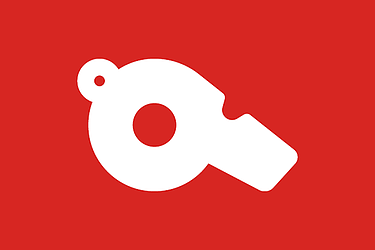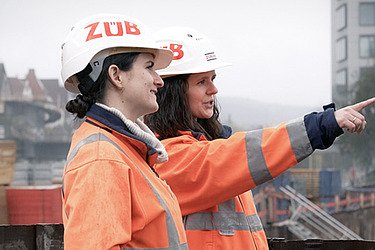Health, Safety and Wellbeing
At STRABAG, occupational safety is more than just a collection of rules and instructions; it is a fundamental value of our company.
We are committed to a working environment in which all employees actively contribute to their own safety and to the safety of the team, and we are continuously working on the further development of strategies and programmes to meet the changing challenges of the future.

Support from management
The safety of our employees and of the people employed by our clients and partner companies is a matter of priority throughout the Group. The Management Board is responsible for creating the necessary occupational safety framework. When it comes to the subject of safety, our leadership employees are strict and uncompromising. They serve as role models, motivating employees to pay attention to safe working practices, and resolutely demand safe working behaviour from our partner companies and temporary staff as well.
Our goal: "Vision Zero - Zero accidents"
The central staff division Health, Safety & Wellbeing plays a central role in implementing our zero-accident philosophy. HSW is not only responsible for developing and monitoring occupational health and safety guidelines, but also for introducing preventive measures and implementing innovative solutions to minimise risks. Its close collaboration with all of our departments and the deployment of experts in the field ensure an ongoing risk assessment and adaptation process.
In addition to these preventive approaches, our experts also carry out workplace inspections to ensure that the working environment complies with the applicable safety standards. Our HSW employees carry out regular site visits, identify potential hazards and take immediate action where necessary. Particular attention is paid to the direct dialogue with employees on site in order to obtain realistic feedback and to develop solutions together.
Strong awareness campaign "1>2>3 Safe!"
We promote health and safety awareness through training and the use of state-of-the-art technologies. This is reflected in our strong safety culture, based on the principle of 1>2>3 Safe! 1. Stop. 2. Think. 3. Act.
These three steps should encourage us to pause for a moment and consciously choose the right work steps. In doing so, we make a choice for safety and health. These seconds can decide whether everyone comes home to their families in good health in the evening.
Regular promotional campaigns around the World Day for Safety and Health at Work
The World Day for Safety and Health at Work is celebrated annually on 28 April. STRABAG uses this occasion to organise a Group-wide Health, Safety & Wellbeing focus week. The diverse programme includes safety walks on our construction sites and other workplaces together with safety experts, occupational physicians and leadership employees, as well as workshops on proper risk assessment on the construction site, accident evaluations and safety measures.
Health promotion at STRABAG
Our corporate culture encompasses an appreciation for respect, partnership and sustainability. It forms the foundation for the wellbeing of each and every one of us. Our leaders serve as role models for a healthy work-life balance and promote a healthy workplace. Together, we create a working environment at STRABAG that is not only productive but is also fulfilling and promotes health in all areas. For us, a healthy and happy team is the basis for innovation and sustainable growth.
Focus on healthy employees
STRABAG is dedicated to improving the health and wellbeing of its employees and has established a comprehensive health promotion programme. Because committed, satisfied and healthy employees are our company’s most valuable asset. The health and wellbeing of each and every one of us is a cornerstone of our success. This is also illustrated by our strategy “People. Planet. Progress.”, which puts our employees first.
Workplace processes and working conditions are systematically designed to promote health in the long term and to enable employees to adopt healthy behaviours at work. These processes should be firmly anchored in the corporate culture and serve both the company’s objectives and the wellbeing and fitness of our employees. When selecting suitable measures, the wellbeing of our employees is considered in its entirety, including all physical, mental and social health aspects.


